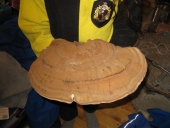munching squirrel by
frankenstoen, on Flickr
I think using nuts to harvest squirrels is as good an idea as using squirrels to harvest nuts.
Depends on what kind of protein you are hungry for.
This might be approached from a Zone perspective - use pipes, boxes, nail kegs, carpet, etc. in Zone Five - areas away from the homestead, to gather nuts that one would otherwise miss.
Shoot/harvest the nuisance squirrels in Zones closer to the house, where they cause damage.
In some areas, squirrels are known PLAGUE carriers. It would be wise to control the squirrel population in these regions.
PLAGUE WARNING! by
frankenstoen, on Flickr








